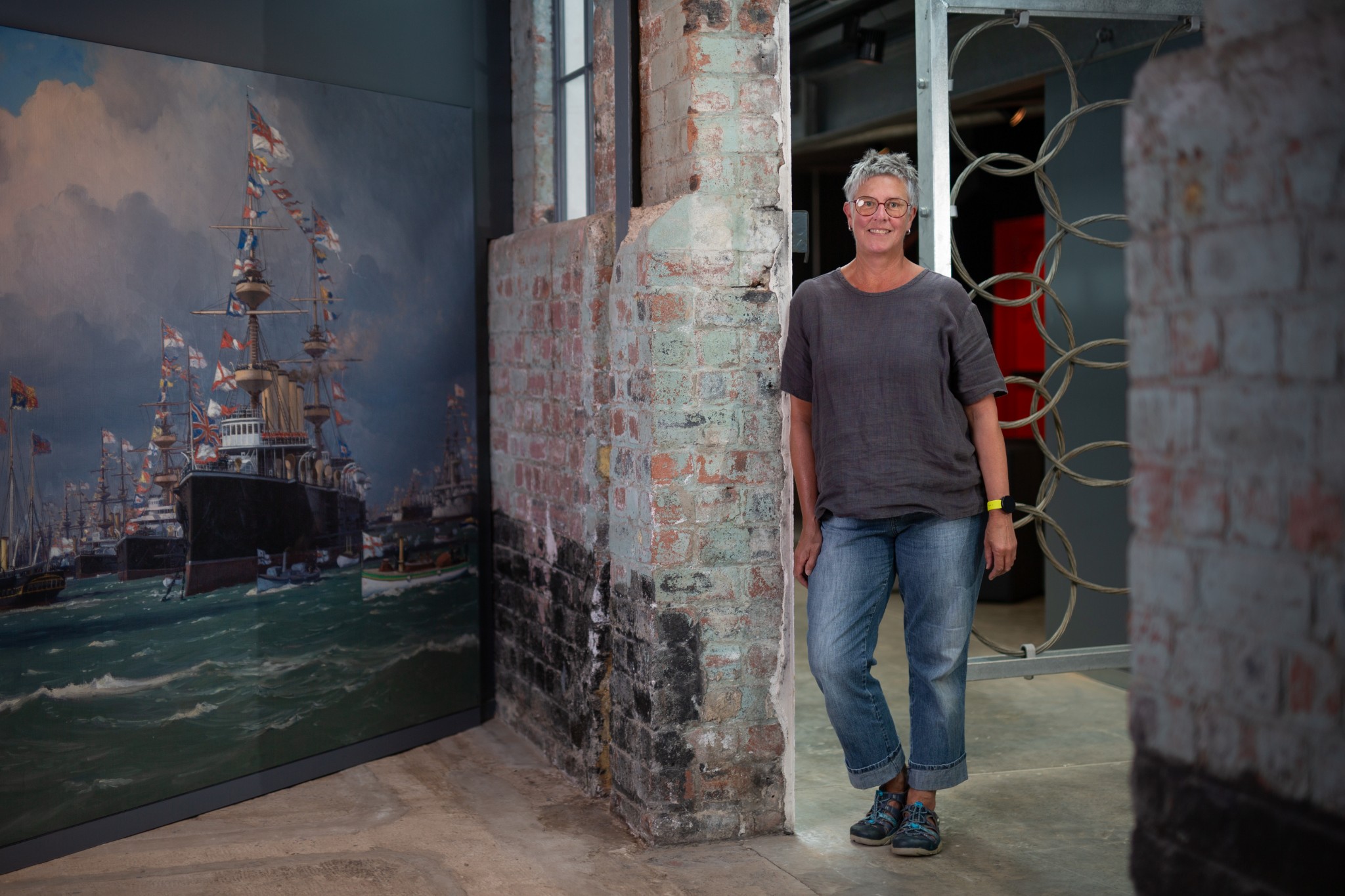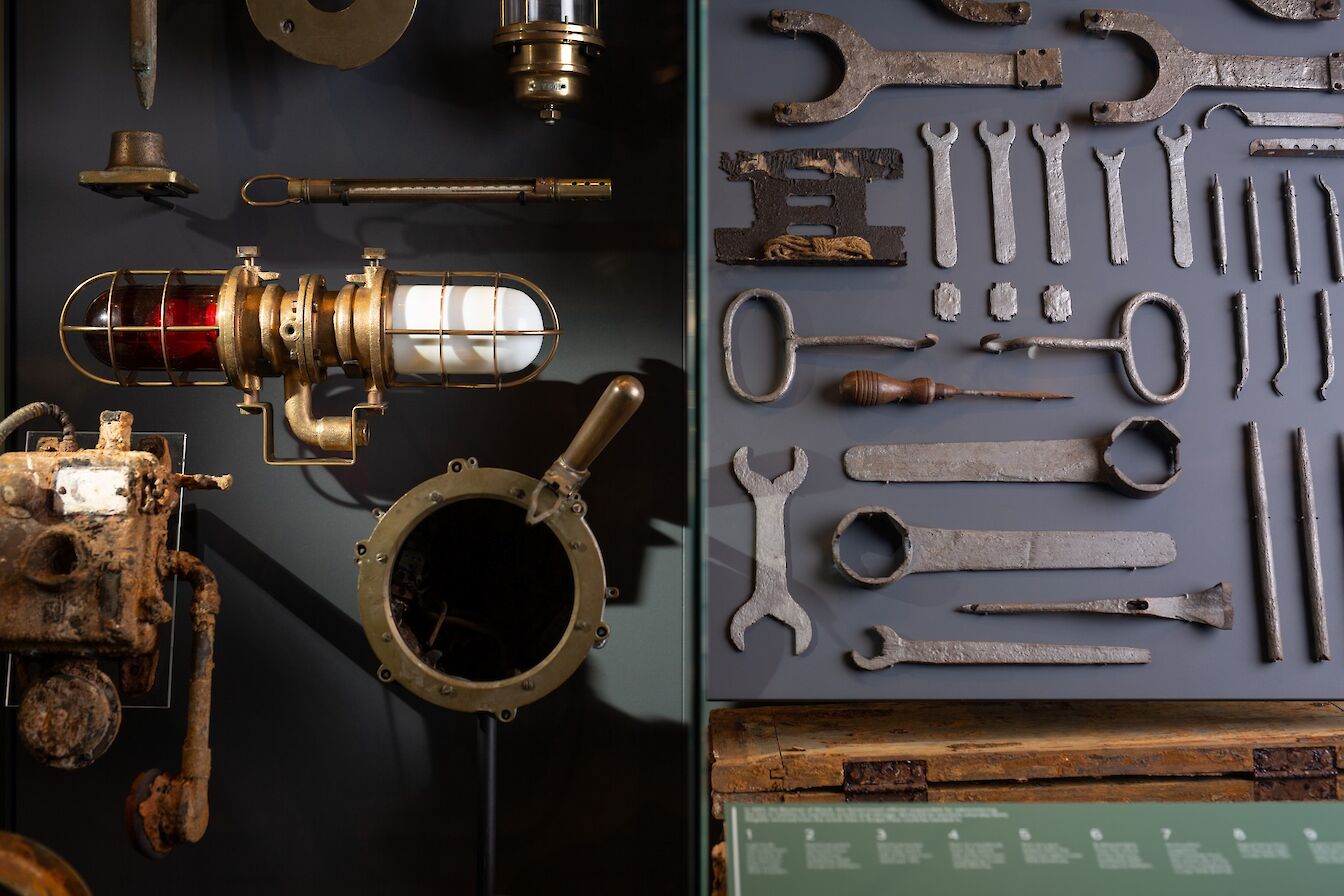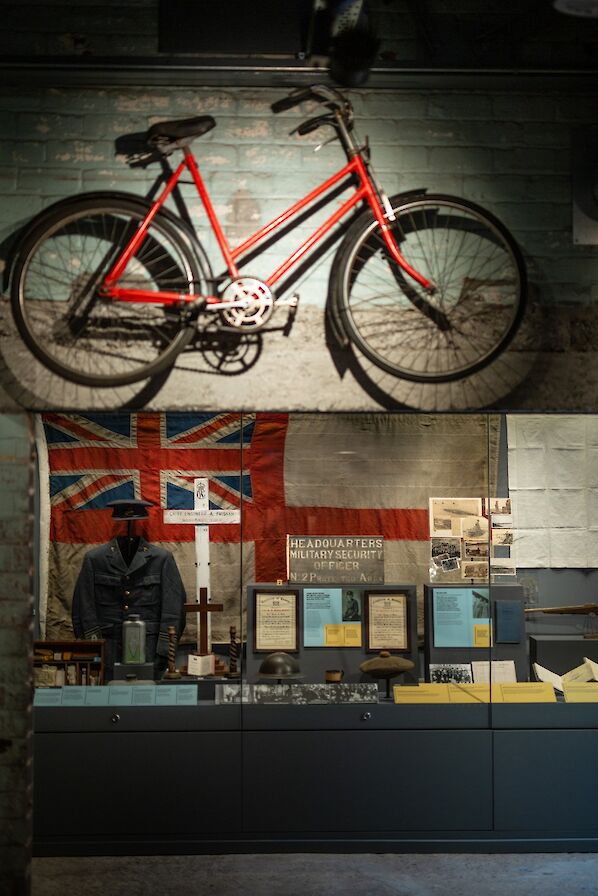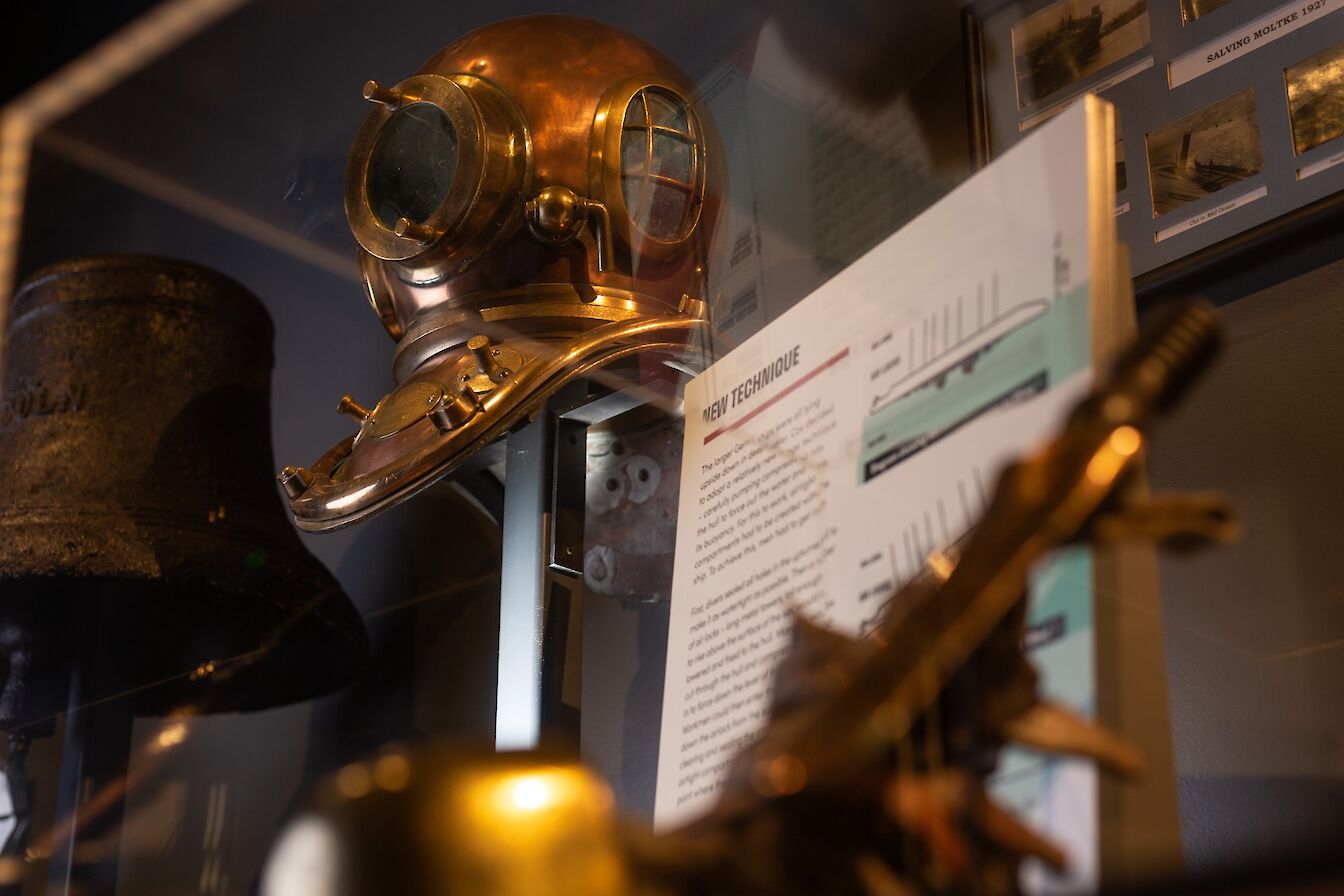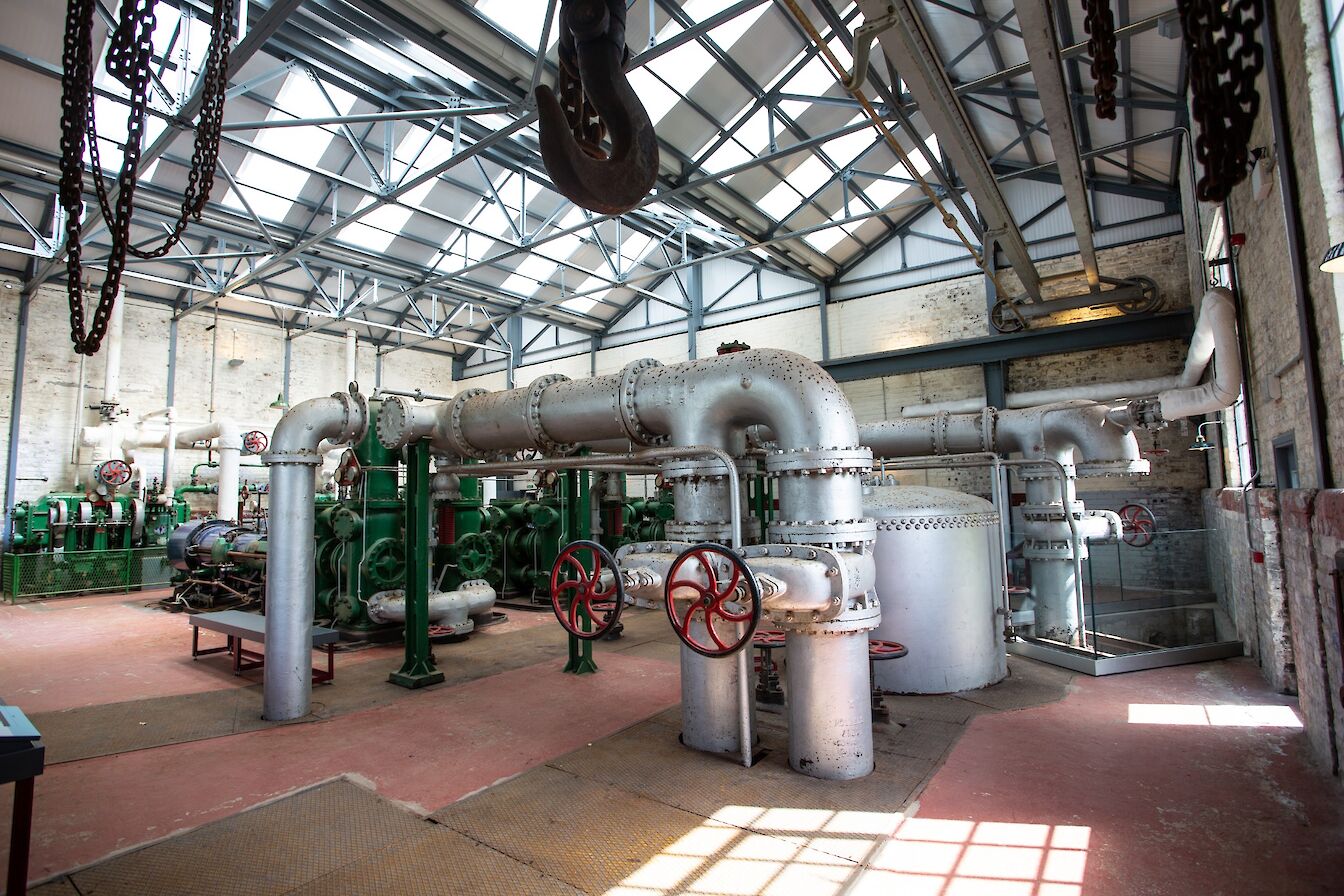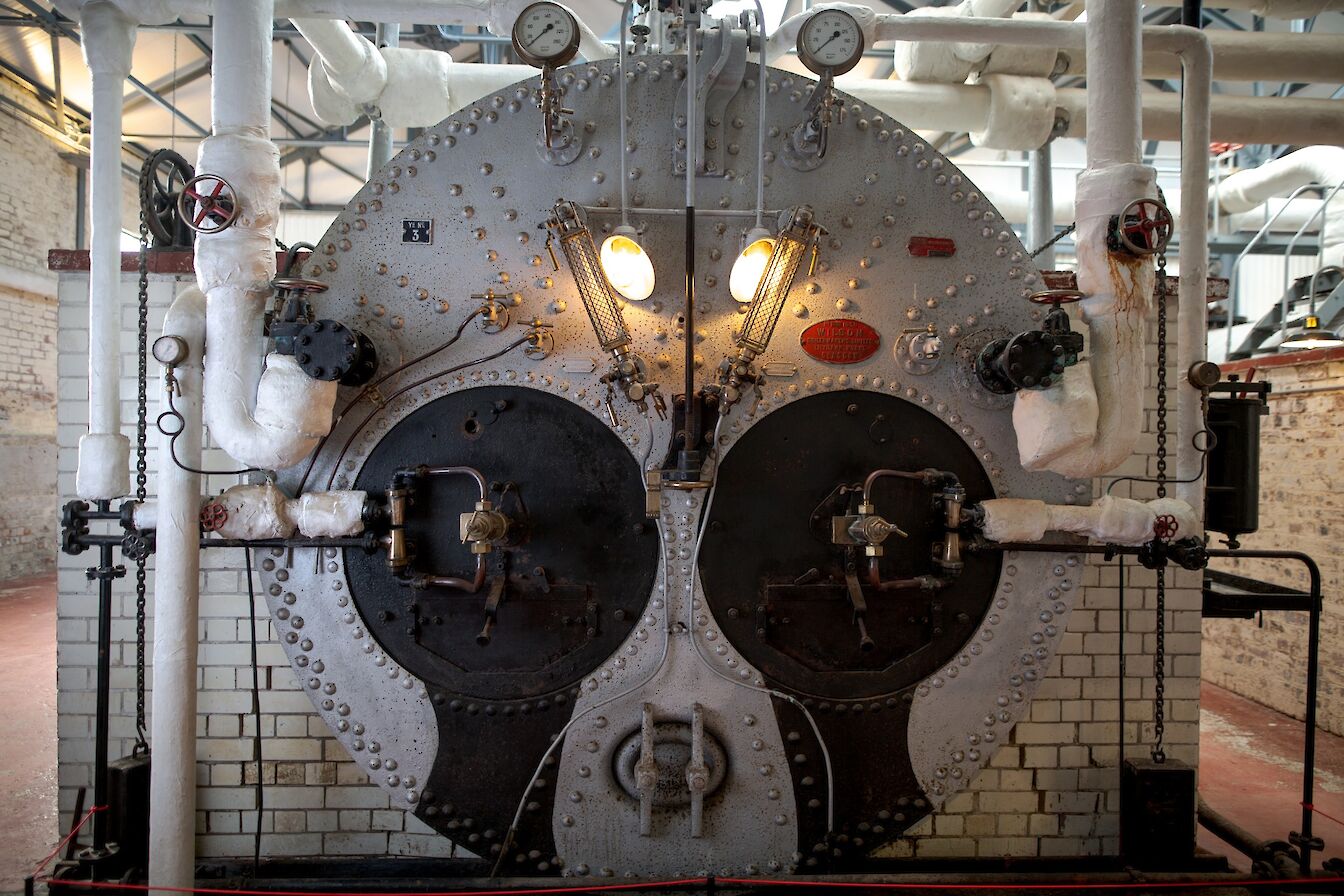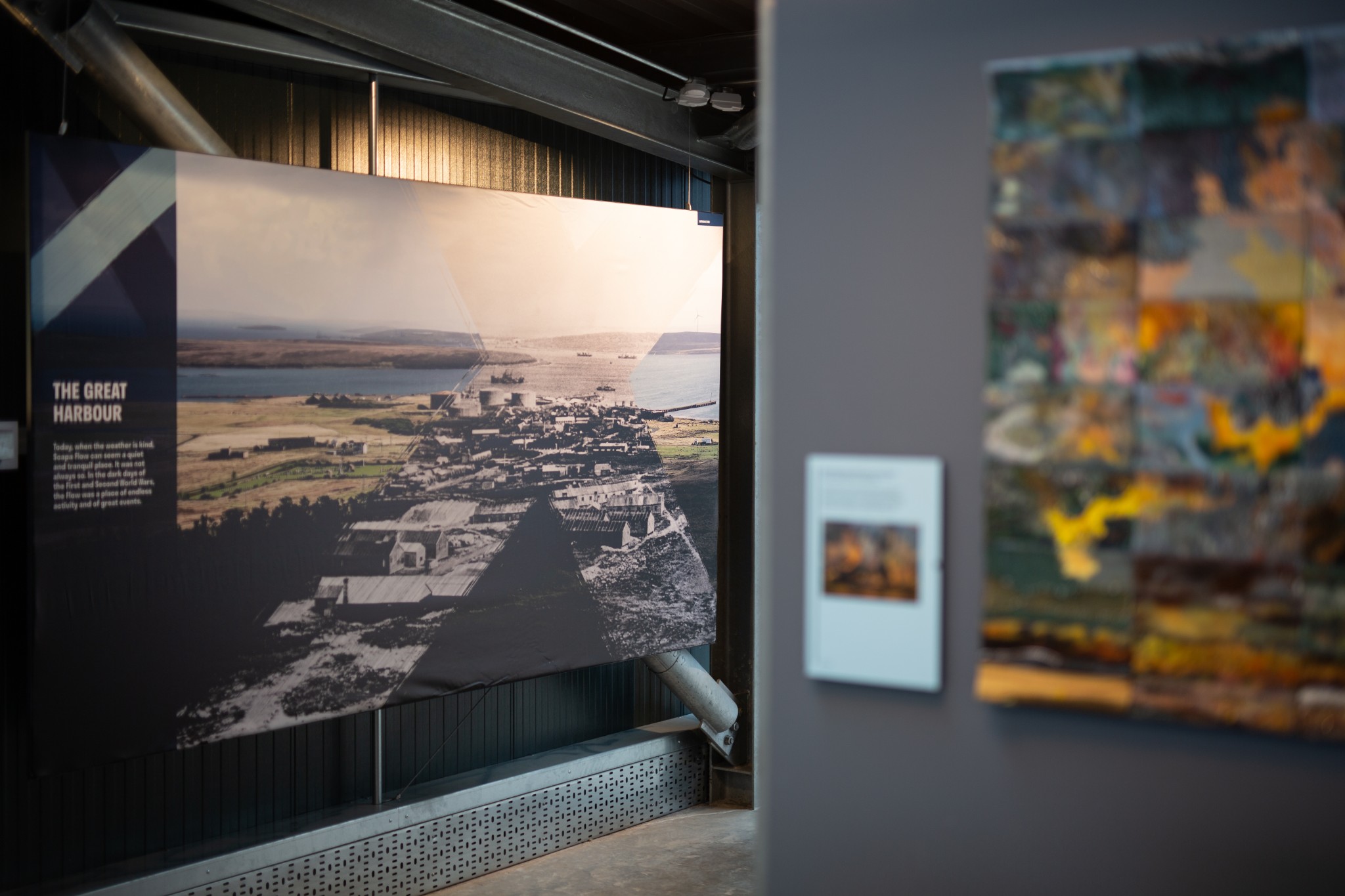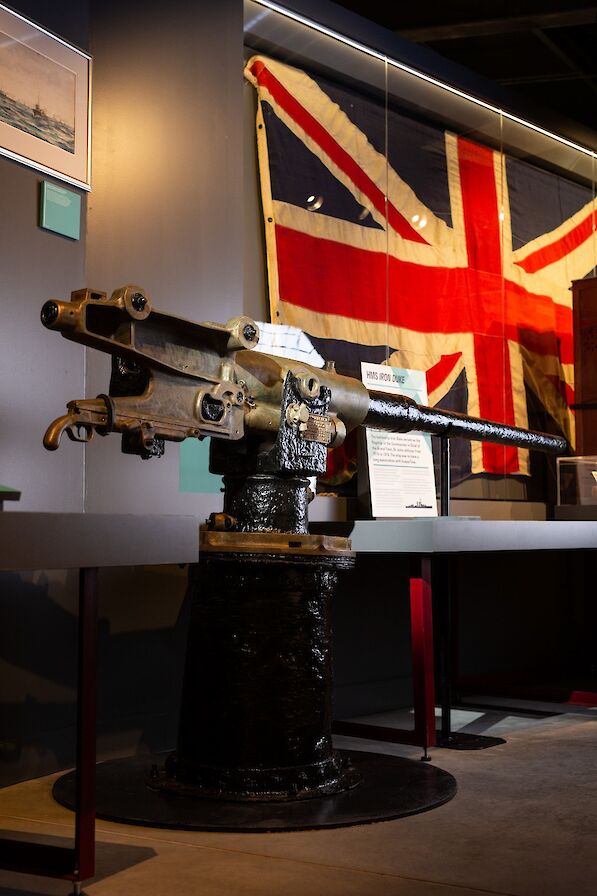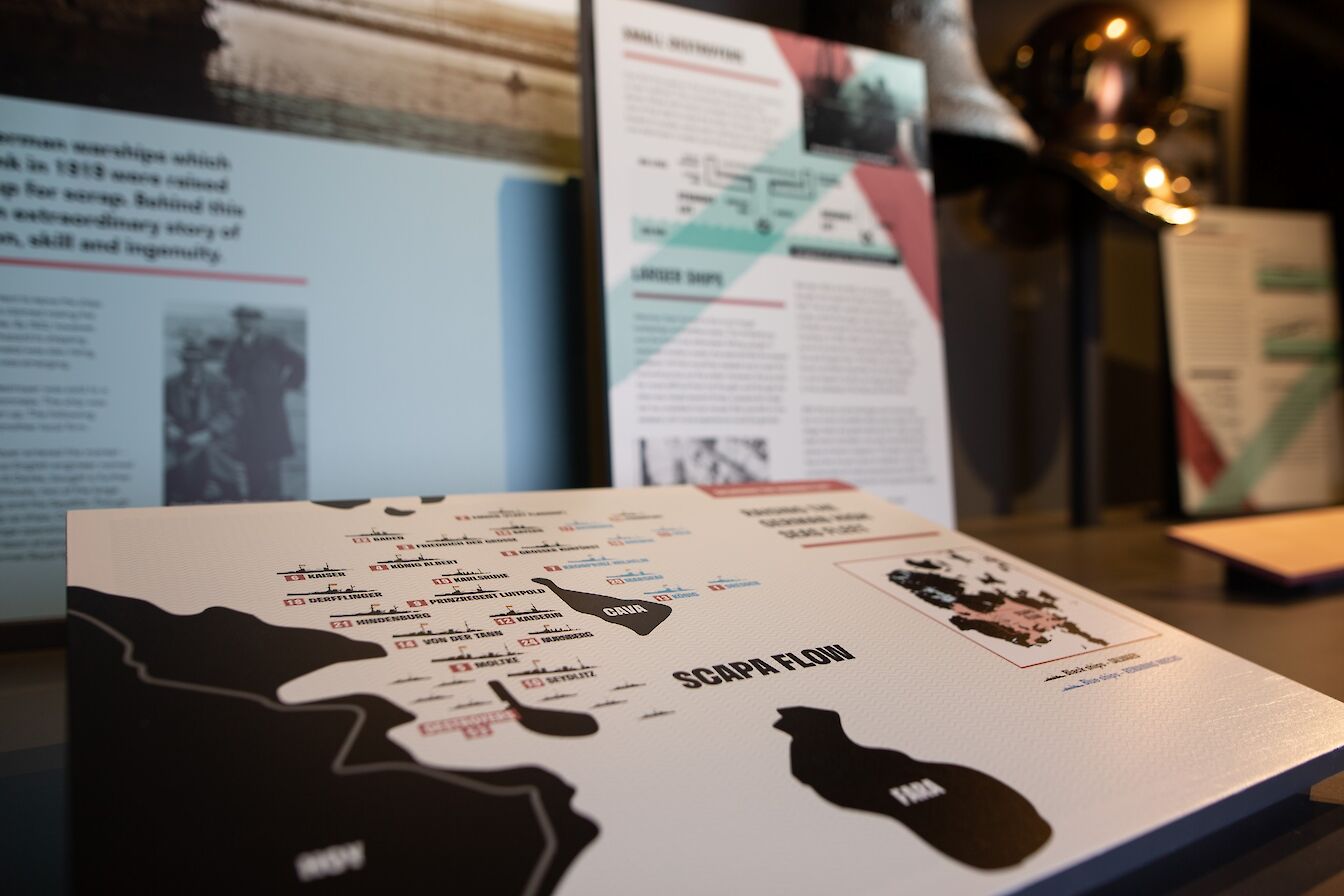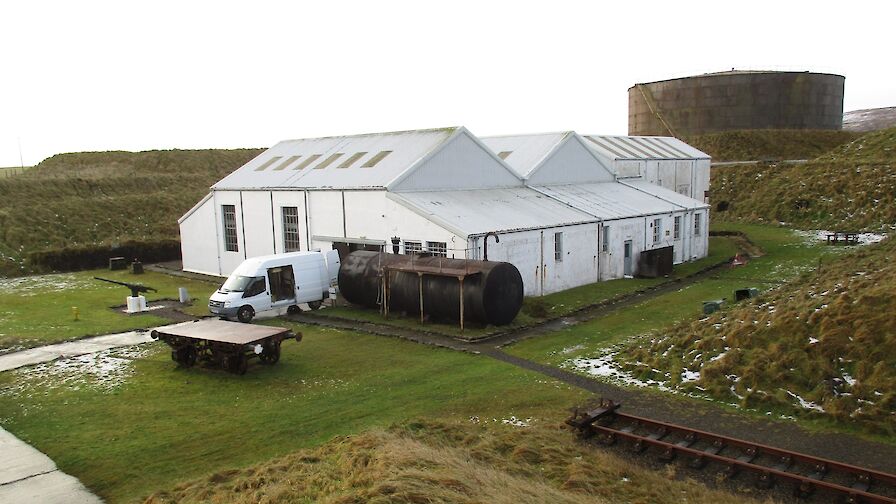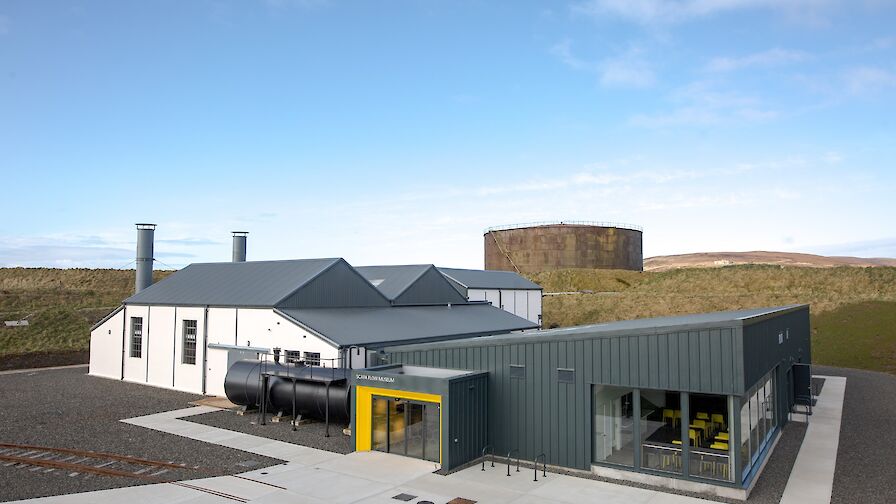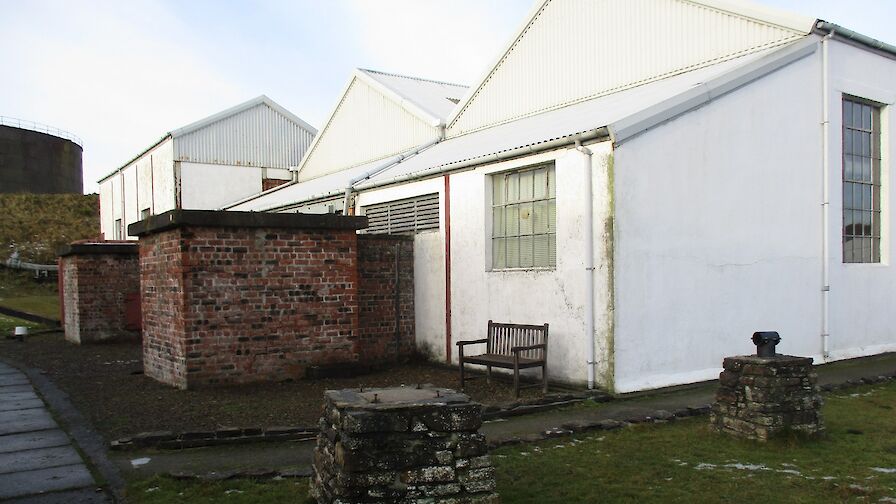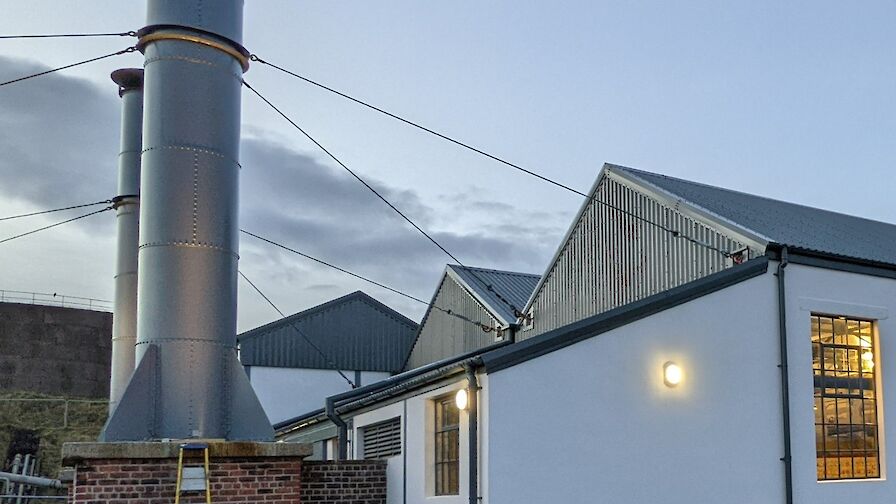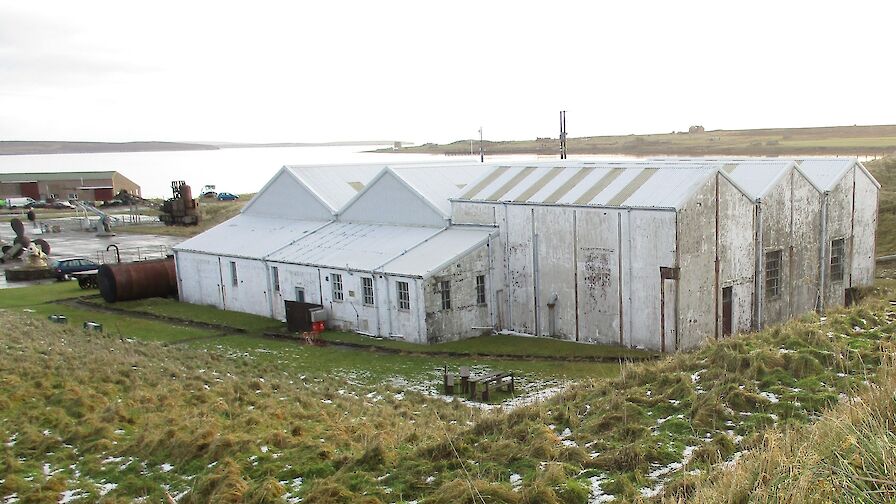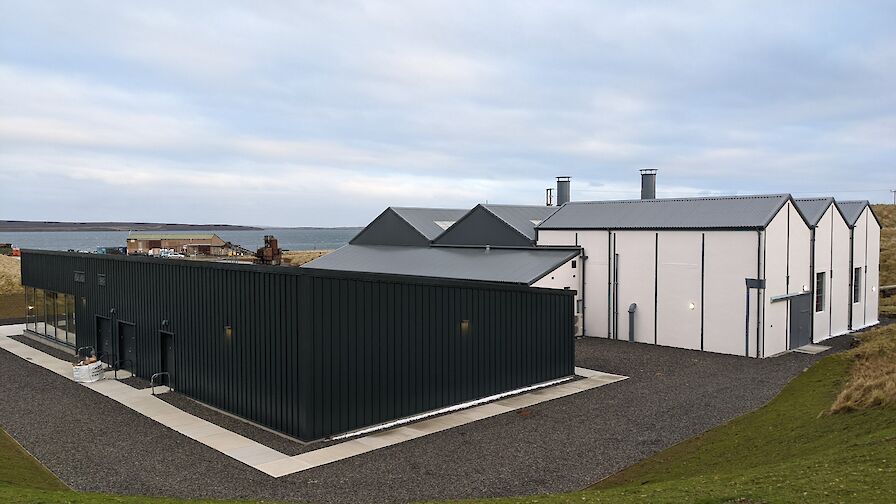“The stories we tell here today, whilst locally important, are also of national and international significance.”
Jude Callister, Visitor Services Officer with Orkney Islands Council, is standing in the centre of the iconic old pumphouse at Lyness.
The atmospheric building, home of the Scapa Flow Museum, has undergone a remarkable transformation over the last three years and now, ahead of its official opening on 2 July, is full of more than 250 fascinating objects and artefacts showcasing Scapa Flow’s history as the home of the Royal Navy during two global conflicts.
Originally built before the start of the Second World War to transfer oil to and from storage tanks - including a vast subterranean network safely concealed from enemy bombardment in the nearby hillside - and back out to ships at harbour, the pumphouse became a museum in the 1980s before closing its doors in 2017.
“It was built in 1937 and anyone who visited in the past will know that the conditions just weren’t ideal for a museum display,” says Jude. Indeed, the facility had to shut in the winter months because the building was close to uninhabitable – both for the staff and the artefacts themselves.
The risk of losing some of these incredibly rare and important objects for good was the catalyst for change. The search for funding to upgrade the museum began as far back as 2013 before a £4.4m project, incorporating an extension, café facilities, and refurbishment of the historic pumphouse was announced three years ago.
“It has been a long-drawn-out process,” says Jude. “We’ve essentially been working on this for close to a decade, be it getting funding in place or designs approved. Then we’ve been going through the build process. But now it’s incredibly exciting - to actually stand in the finished article and appreciate what we’ve all achieved, it’s just a wonderful feeling.”
Jude is right to be proud. The new museum is full of fabulous design quirks and character, and the displays are packed with some never-seen-before artefacts detailing Scapa Flow’s rich wartime history and heritage.
They tell the tales of major sea confrontations, including the Battle of Jutland, the devastating loss of Royal Navy ships and their men, and the heroic salvage of the scuttled German High Seas Fleet in the Flow after the end of the First World War.
New additions include a virtual reality display, audio-visuals focused on the history of Scapa Flow and its modern-day role in Orkney, and a new digital 3D exhibit that helps visitors explore the Flow’s wreck sites. It’s an impressive and immersive experience.
The modern extension makes all this possible, providing a climate-controlled space perfect for preserving artefacts, some of which are over 100 years old. It also means the pumphouse has been stripped back to how it used to be, providing a real insight into the past.
“The main priority for us was to keep the pumphouse building going,” says Ross McEwen, Capital Projects and Programme Officer at Orkney Islands Council. “It’s an amazing structure with a fantastic history, but it just wasn’t fit for purpose. The ambition was to have a more suitable building that could be open all-year-round, and when we realised the pumphouse just couldn’t house some of the more sensitive artefacts, the idea for a modern, state-of-the-art extension came about.
“In the pumphouse, we wanted to keep the original character of the building and its stories, and then in the extension we had a lot more freedom with the design and the colour scheme, and we wanted that feeling of transition of going from the old to the new.”
The work carried out by local contractors Orkney Builders and Heddle Construction on both the extension and the restoration of the pumphouse has been first class, and has included new roofing, rainwater goods, metal windows and timber doors. The imposing 30-foot chimneys have also been reinstated after being removed nearly ten years ago.
Building work began in the autumn of 2019 before the coronavirus pandemic abruptly halted the project the following March. It wasn’t until spring 2021 that construction got underway again, with the majority of the work completed in February. It was April before the Council’s museums staff could start to fill the building with the fascinating artefacts, and despite the tight timescale, that’s exactly what the small and dedicated team has managed to do.
“There was just a feeling of suddenly being given all this freedom to show things that could never have been on display in the old pumphouse,” recalls Ellen Pesci, Social History Curator with Orkney Islands Council. “When the building was handed over to us, we knew it was ready for all these things we’ve curated and collected, and we just set about getting them into the museum and working it all out in a practical sense.”
Ellen also highlighted the collaborative nature of the work that has brought the project through to completion, withstanding the impact of a pandemic in the process. “We’re not a big team so the external help we’ve had has been vital and has made all the difference; their skills and expertise really made things easier for us to get the museum ready in such a short space of time,” she says.
As well as a number of Council departments, the project team included lead architects LDN Architects, exhibition designers Studio MB, graphic designers Rocketbox Design, and exhibition fit-out specialists Marcon. Ay-Pe was responsible for the audio-visual features, with the Virtual Reality pod designed by the University of St Andrews School of Computer Science. The 3DVisLab at the University of Dundee was responsible for the 3D features, and professional mount makers, Colin Lindley and Kate Silverston, helped bring the exhibitions to life. Local designer Kerry Cooper also worked with the project team to develop the eye-catching new branding.
The museum is more than just a workplace for Ellen too, with a real family connection to the building and the surrounding landscape. Her grandfather, Vic Baikie, was works foreman at Lyness until his death in 1969, and a painting by her late father, renowned comic artist Jim Baikie, depicting his childhood spent in and around the Lyness area, hangs in the new extension.
“I realised all of a sudden that I was going to be in charge of this project in the building of my grandfather’s workplace,” she says. “It’s like I’m carrying his legacy, and just a tiny percentage of this building is ‘mine’, and that’s a lovely feeling.”
So, as the finishing touches are being made ahead of the official opening on Saturday 2 July, the excitement is really building amongst the staff who have spent so long trying to bring this project to fruition. “We’ve hosted some pre-opening visits and you realise that suddenly with people inside, the museum becomes alive,” says Jude. “You’ve got a murmer of voices, they’re picking out objects, they’re discussing the displays and moving through the building.
“Once we officially open the doors, we’ll have a living, breathing museum, one that’s telling its stories to a new audience, and I think that is the most rewarding aspect of all.”
The Scapa Flow Museum opens on Saturday 2 July. It will be open between 9.30am and 4.15pm. Throughout the year, the opening days are:
May-September: Monday to Sunday
October-December: Tuesday to Saturday
January-February: CLOSED
March: Thursday to Saturday
April: Monday to Saturday
Admission is free and donations are accepted. There is a gift shop and toilet facilities available.
The £4.4m Scapa Flow Museum refurbishment has been supported by Orkney Islands Council, the National Lottery Heritage Fund, Historic Environment Scotland, the Orkney LEADER 2014-2020 programme, Highlands and Islands Enterprise, NatureScot and Museums Galleries Scotland.
